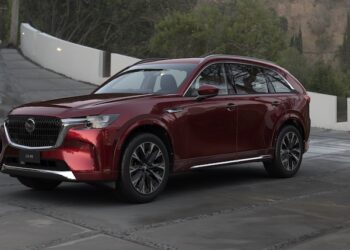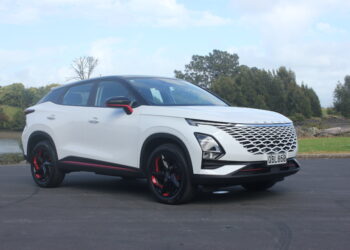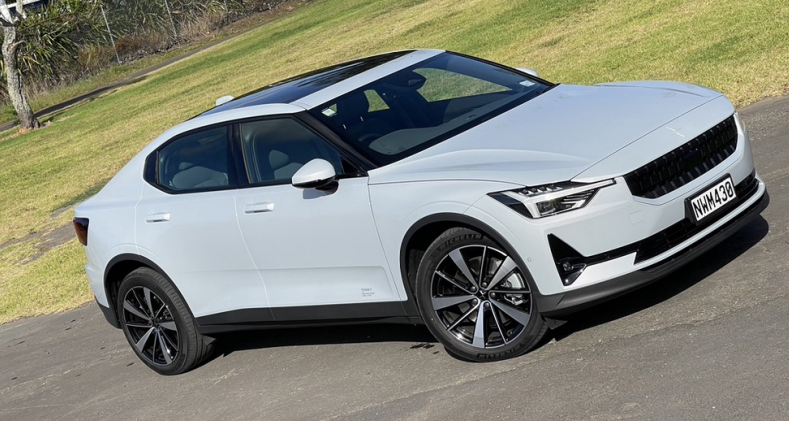
The Swedes are an impressive people. They’re world leaders at intelligent yet simple design and making safe yet sporty vehicles.
The Chinese? They sure know how to build electric vehicles in volume at a price that can’t be beat.
Put them together and you’re going to get something special.
And you do. The result is Polestar, a Swedish-led spin-off from Volvo, backed with the deep pockets and production opportunities of China’s giant Geely group.
Together, they’ve come up with the Polestar 2, the first electric vehicle, that even comes close to matching the all-conquering Tesla Model 3.
We covered Polestar’s entry into the New Zealand market late last year, but to reiterate. The brand is being distributed here by Auckland dealer Giltrap Group, which already holds the licence for Volvo.
That gives Polestar a head-start on service outlets and parts supply. Cars will be sold through Polestar Space dealerships, with the first under construction in Auckland’s Newmarket.
The Polestar 2 range starts with a single motor standard range model with a 69kWh battery and a $69,990 pricetag that includes on-road costs.
A long range single motor version with a 78kWh battery is $78,990.
Both feature a front-drive 170kW motor and are eligible for the Clean Car discount.
In fairness, to match the Model 3, you’d probably want to add the Plus Pack ($5500) to your order.
It adds a full-length panoramic glass roof, Harman Kardon audio system with 13 speakers, WeaveTech vegan upholstery, Black Ash decor panels, fully-electric heated front seats with memory, heated rear seats, heated steering wheel and heated wiper nozzles (this is a Swedish car, remember).
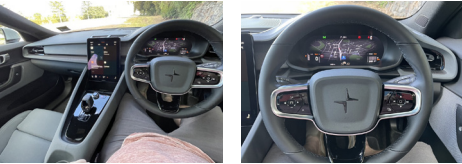
A long-range dual motor Polestar 2 is $93,900, and gets a beefy 300kW/660Nm allwheel drive powertrain.
Add a Performance Pack ($9000) on top and you get adjustable Öhlins dampers, Brembo brakes, forged 20-inch alloy wheels and signature Swedish Gold detailing inside and out. Oh, and yellow seatbelts.
The other option you’d probably want to consider is the Pilot Pack ($4000) which includes advanced safety and driver assistance features like pixel LED headlights with LED front foglights.
It also includes Driver Assistance with Adaptive Cruise Control and Pilot Assist, a 360-degree surround-view camera, all-round parking sensors, and Driver Awareness including Blind Spot Information System (BLIS) with steering support.
And there’s Cross-Traffic Alert with brake support, and Rear Collision Warning.
Which Polestar would I go for? Probably a standard-specification long range with Pilot Pack.
I suspect that configuration will be popular with many Kiwis who don’t need the flash roof, wood, or heated seats.
It offers plenty of power and an honest realworld range of more than 400km (540km claimed).
IS IT A BIRD OR A PLANE?
One question I still haven’t entirely answered for myself is whether the Polestar is an SUV, sedan, or a hatchback. The answer is, yes.
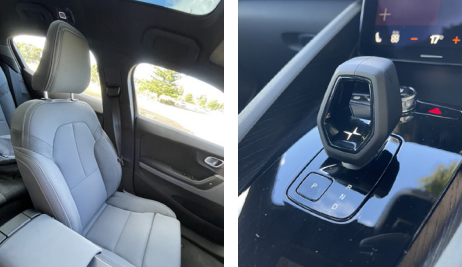
It’s a unique design, with its huge 20-inch wheels, raised ride-height and aggressive, sporty, styling.
The car has huge carpark presence. It looks like something special, and incredibly purposeful. An absolute win here.
The hatchback/liftback makes it immensely practical for a car that’s not a wagon (and sadly it seems there’s no Polestar 2 wagon coming).
At 405-litres of cargo space (1095 with the seats folded), it’s a few litres shy of the Tesla, but the hatchback makes it properly useful.
There’s a small frunk, enough for charging equipment, but I’m told this will be improved in coming production.
The interior looks exceptional, with interesting fabric-like dashboard and door surfaces, and a seat covering that looks and feels like a weird combination of wetsuit material and leather. It’s vegan to boot.
The seats themselves are very well sculpted and comfortable, and though there’s plenty of room in the front, your tallest mates won’t like the back. It’s a smidge tight.
I have two interior niggles. The rear of the two front cupholders is covered by an armrest, and though it folds back it still makes the second cupholder impractical to use.
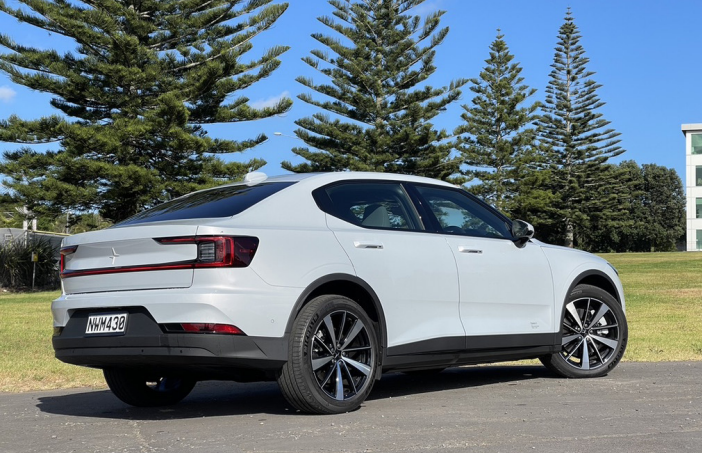
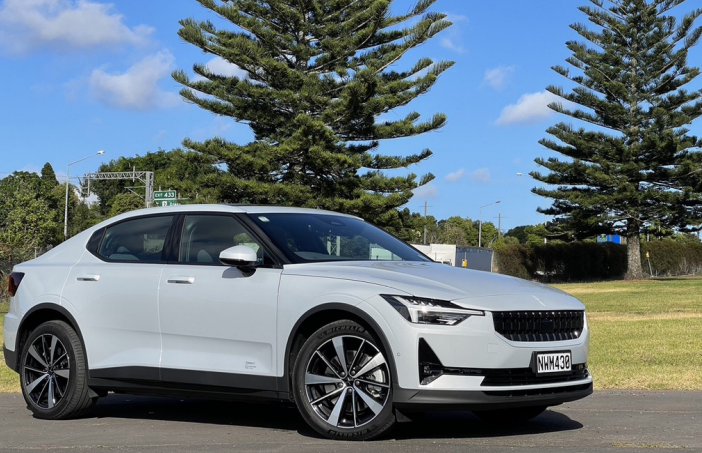
Second, the trim around the centre console looks great, but is very hard. For a taller chap like myself it dug slightly into my left knee. Not enough to hurt, but enough that I had to reposition myself more than once.
Once comfortable in the driver’s seat, you’re presented with a 12.3-inch digital dashboard, and an 11-inch vertical screen in the centre console.
It’s basically a giant Android phone, right down to a 4G connection.
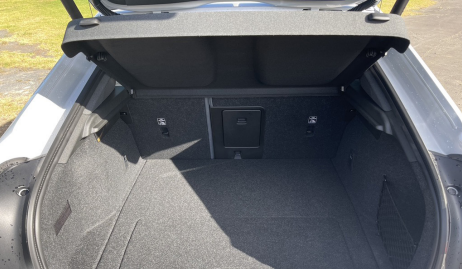
The Polestar 2 is the first car running an automotive-specific Android infotainment system, allowing you to add apps. I added Google Music and podcasts, for example.
You then control everything through “Ok Google’” voice commands. It all works pretty well, and with “Over the Air” updates it can be tweaked and improved.
If you don’t like it – Apple CarPlay and Android Auto are on the way.
The Polestar comes with two keys, a standard fob, and a mini waterproof version for your aspirational sporty types.
You can also use your phone as a proximity key through the Polestar app. I found that a little flaky and hope it will improve with updates.
CAN IT TOW?
Yes! 1500kg. That test is coming.
YEAH, ITS A FRONT-WHEEL DRIVE
If there’s a compromise you need to make with the Polestar over the Tesla or other executive cars in this price range it’s that it’s front-wheel drive, unless you opt for the dual-motor.
Power and torque at 170kW and 330Nm aren’t drastic or unheard of for a frontwheel drive car.
On paper, the torque figure is lower than an MG ZS EV’s, but in practice it means that when powering through tight corners, through the steering you can feel the car trying to decide what to do with itself.
Don’t get me wrong, the car has plenty of grip, and the ride is brilliant, but rear-wheel and all-wheel drive options are just that little more balanced for sporty driving.
Day to day, you won’t care, and the ride is that much better than a Model 3. It’s possibly the better compromise for all but a few people.
On paper the 7.4-second 0-100km time doesn’t seem brilliant, but on the road the Polestar 2 feels urgent enough.
Where it is quick is at the charger. AC is 11kW, while DC runs at 155kW.
That understates the car’s ability. We put it head –to-head with a Model 3 at ChargeNet’s units at Kaiwaka in Northland and the Polestar maintained a high charging rate for longer, running in triple-figures until well over 70%.
BETTER THAN A MODEL 3?
The long held trope on EV Facebook groups is that people who bought something other than a Model 3 were nudged as to why they didn’t. The NZ pricing of the Model 3 here is so sharp, and it’s a great car.
Is the Polestar better?
In many ways it is, particularly in the context of New Zealand use.
In some ways no, but it is a brilliant vehicle and makes it clear that from now on the 3 should no longer be the default EV buy.





